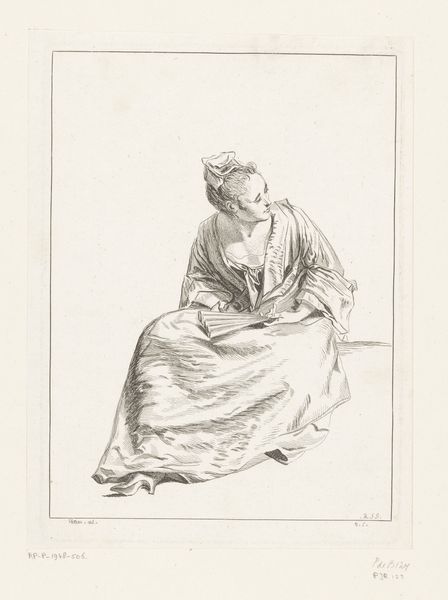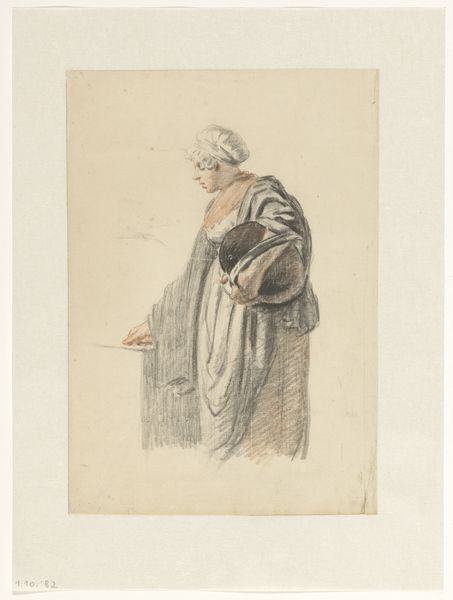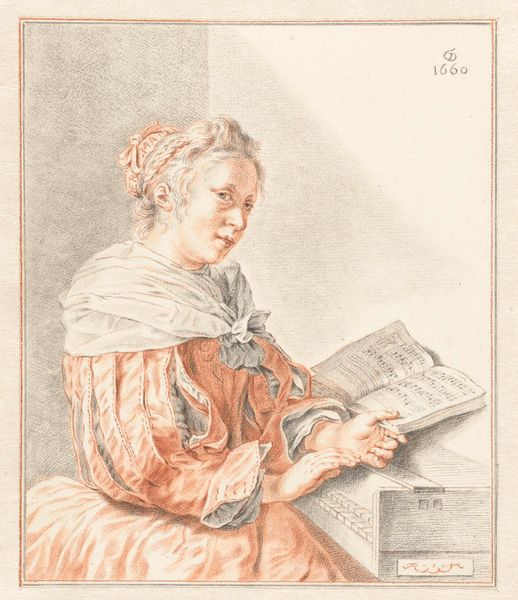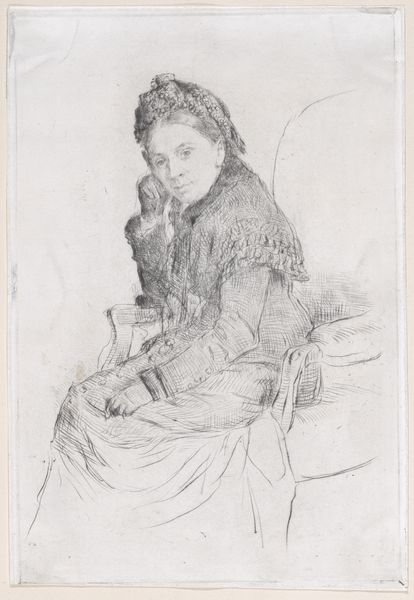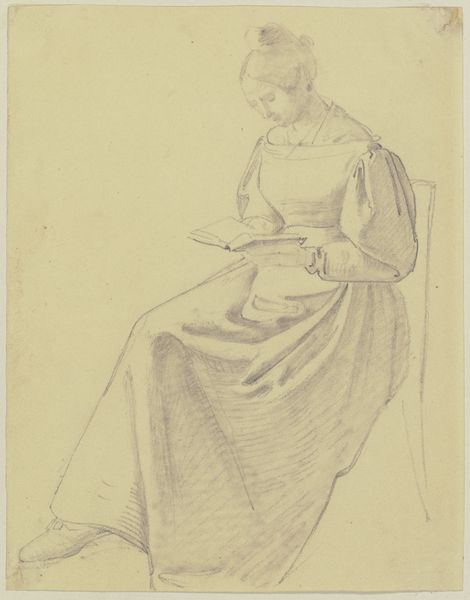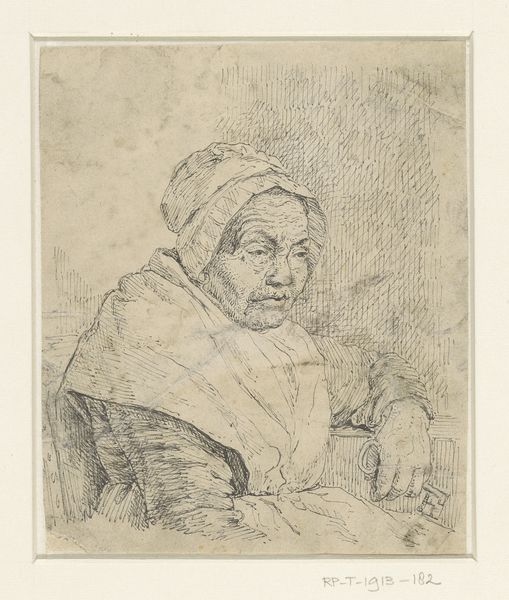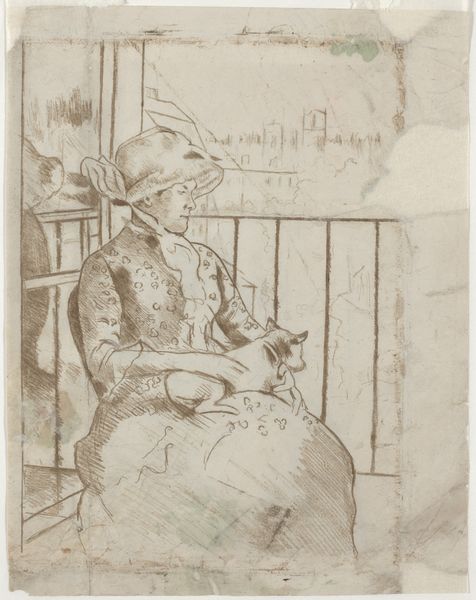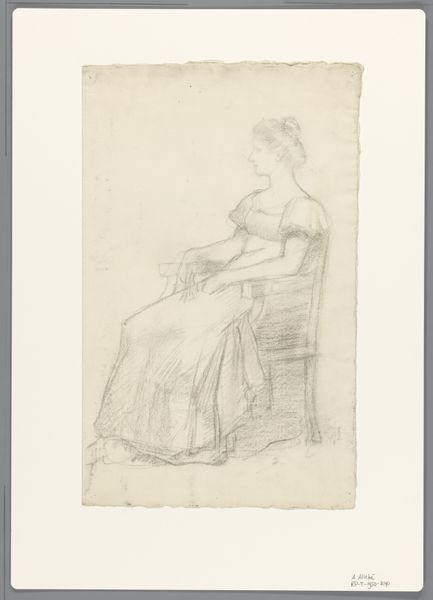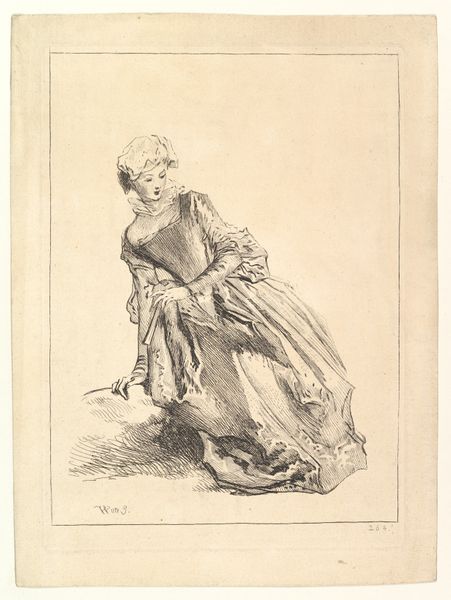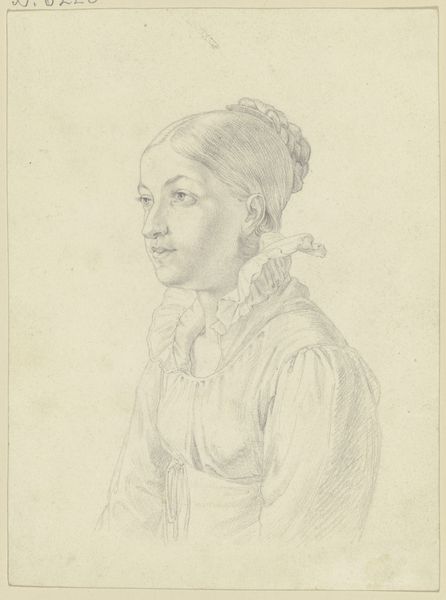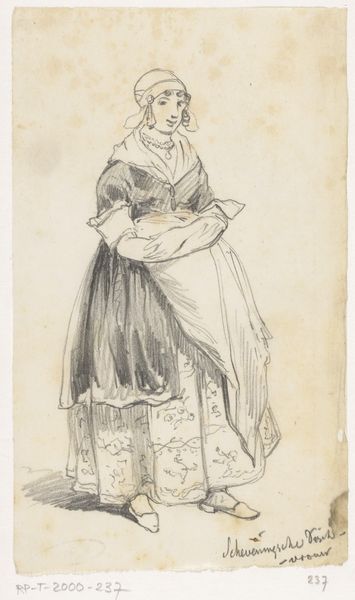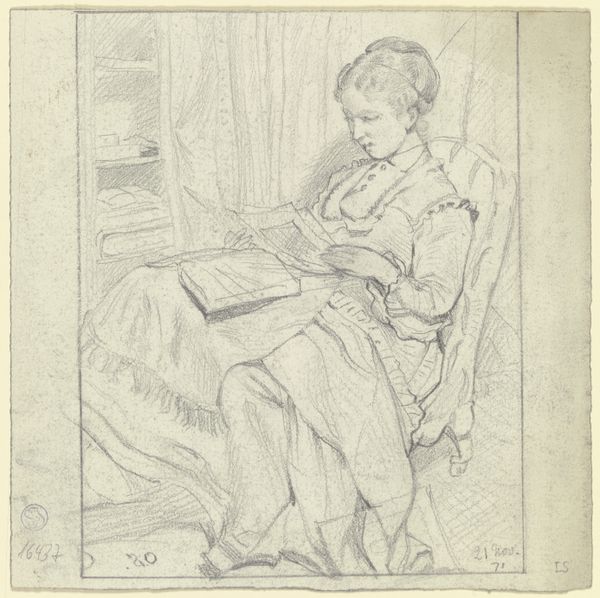
drawing, watercolor
#
portrait
#
drawing
#
watercolor
#
genre-painting
#
watercolor
#
rococo
Dimensions: height 175 mm, width 146 mm
Copyright: Rijks Museum: Open Domain
Curator: This is Johannes Körnlein’s “Klavierspeelster,” a drawing rendered in watercolor from 1767. It resides here at the Rijksmuseum. Editor: My initial impression is one of fragility. The pale colors and delicate lines create a sense of quiet contemplation. Curator: Körnlein was working within the Rococo style, but the relative simplicity here offers us a compelling lens into 18th-century domesticity. The painting’s existence also gives rise to discussions about who could access a creative life during this period. Editor: Notice the way the light catches the subject's face, drawing our attention to her expression. The subtle variations in tone, achieved through watercolor washes, really create a luminous effect. The musical notes themselves suggest dynamic rhythms—visual representations of sound. Curator: And what stories might the notes themselves tell? Is she a professional, composing or practicing? Or is she from the leisured class, displaying a highly gendered accomplishment? It's striking how musical ability and education are tools that define women in relation to social expectations. Editor: Interesting. I hadn't considered gender in particular. What drew me was how the texture of the paper itself almost seems to vibrate beneath the watercolor, adding another layer of depth to the drawing. Also, observe the meticulous cross-hatching; it allows for gradual tonal changes. Curator: And note that the very choice of genre painting reinforces that the sitter is participating in what's permissible as a feminine subject at that point in history. What this picture signifies to me are the rigid parameters confining women's roles during this time. Editor: Right, but I see both a story about a societal expectation *and* skillful mastery of draftsmanship here. The texture alone shows control and mastery. It reveals so much by communicating an ephemeral impression through a precise and studied approach. Curator: By recontextualizing artworks like these, and by exploring questions about class, gender, and access to self-expression, we enrich our engagement with both the past and present. Editor: Indeed, looking at it in terms of form and material has given me fresh eyes too. Thanks to that vibrant analysis of the painting's social underpinnings, I'm ready to move on.
Comments
No comments
Be the first to comment and join the conversation on the ultimate creative platform.
